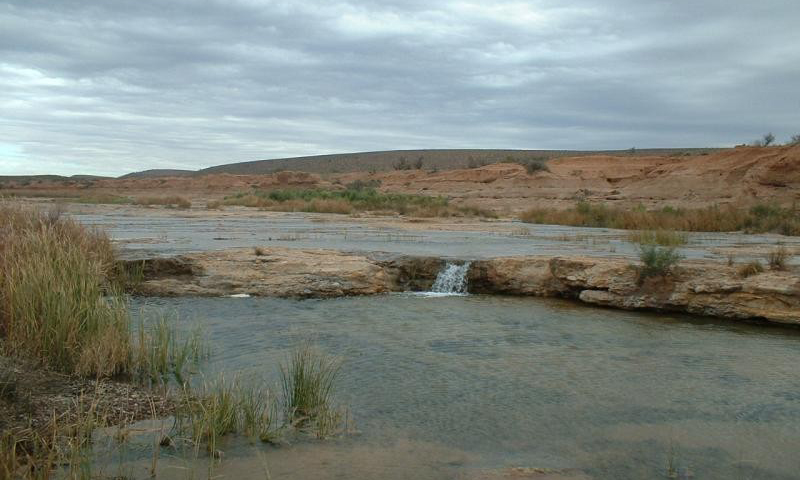After a definitive 'no thanks' from a citizens' jury and vague plans for a referendum, the idea of a nuclear waste dump in SA seems to have been buried. Aimee Knight explores why Generation Y were against the plan all along.
Wasted youth
Off the shore of a secret island, an exhausted man lays in polluted shallows, green sludge lapping against his faintly cerulean skin. He’s at war with his evil alter ego, wrestling to protect the planet from ecological evisceration.
Suddenly, five perfectly diverse teens (and a monkey) sweep in from the sky to blast the noxious nong with a high-pressure hose. Handy solar panels help recharge their fern-haired friend to his full Earth-saving ability. “Looks like that game show’s been cancelled,” the hero quips, which actually makes no sense, but I’m five years old and don’t understand most of what I’ve just witnessed.

If she’s awake, Aimee’s thinking about gender, sexuality, movies, animals, or Bruce Springsteen.
That was my first encounter with nuclear waste: a lustrous lime-green slime that threatened lives each weekday afternoon in 1993 – at least on my favourite TV show Captain Planet. That same year, an international treaty was signed to prohibit the ocean disposal of radioactive waste. Today, the powers that be are still looking for somewhere permanent to put the stuff.
Our State and Federal Governments have identified remote South Australia as a prime location for the world’s first permanent, international nuclear repository. Immediately I picture green ooze slithering into groundwater systems, poisoning plants and animals. A quarter-century after my after-school viewing, my understanding of the nuclear fuel cycle is still derived almost wholly from popular culture. Almost.
Spent nuclear fuel comes from used-up uranium pellets that look like a less iridescent version of what gets tossed around in The Simpsons’ opening sequence. Contrary to the image in the collective consciousness, the leftovers aren’t liquid, but a solid ceramic. This kind of waste represents only a sliver of the world’s cumulated nuclear detritus, but it produces 95 per cent of our radioactivity. Tools, equipment and protective clothing exposed to radiation – not just at reactor plants, but in hospitals and universities – all need to be safely disposed of as well. Low-level waste proliferates in urban centres like ours right now.
But that’s not to downplay the risks here. Nuclear waste is absurdly poisonous. It contains plutonium, which takes up to 100,000 years to become non-toxic. Exposure to wayward nuclear waste has caused birth defects, cancer, even adolescent malformed assassin terrapins (aka Teenage Mutant Ninja Turtles, for the uninitiated).

The best (or least worst) way to isolate and contain high-risk nuclear waste is by burying it. A Royal Commission found that SA has “the necessary attributes and capabilities” to build a world-class geological disposal facility , but a Cititzen’s Jury recently disagreed. Either way what are those attributes, I wonder? A stable political system, compared to nuke-spruiking North Korea, Israel and Pakistan? Our expansive landmass, in contrast to Sweden and Finland (already interring their toxic waste in bedrock)? Perhaps it’s our empty pockets, waiting to be lined with plutonium’s pennies to the tune of $100 billion.
The proposed SA dump has a life expectancy of 120 years: a drop in the ocean – or your preferred contaminated water source – considering spent nuclear fuel emits radiation for several tens of thousands of years, minimum. Fun fact: that’s the same length of time that Indigenous Australians – y’know, one of the world’s oldest continuing cultures – have lived here.
A songline runs through Wallerberdina station, a property near Hawker in the Flinders Ranges. The Federal Government suggests this is a suitable spot for a nuclear waste dump. It’s on crown land, leased in perpetuity to a former Liberal Senator. While state heritage protections apply, the area is not safeguarded by native title.
Wallerberdina, and its neighbour Yappala station, house cultural and archaeological artefacts pertinent to their traditional owners, the Adnyamathanha people. Ancient rock carvings, cave paintings and burial grounds are found throughout the 40 hectares where it’s possible we’ll build a grave site of a very different kind.
Maybe I’m still that naïve five-year-old, but even after I’ve got to know nuclear, I’m not convinced beyond the shadow of a doubt that lingers like a mushroom cloud.




